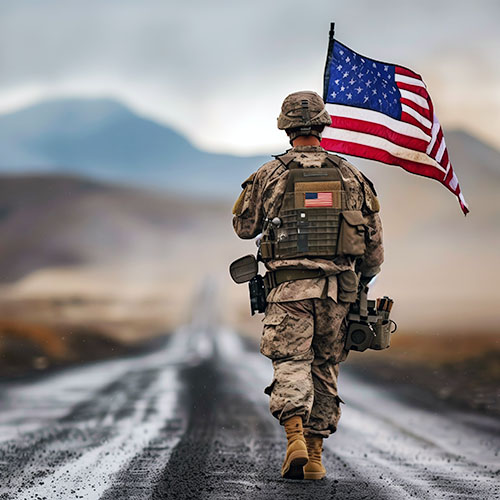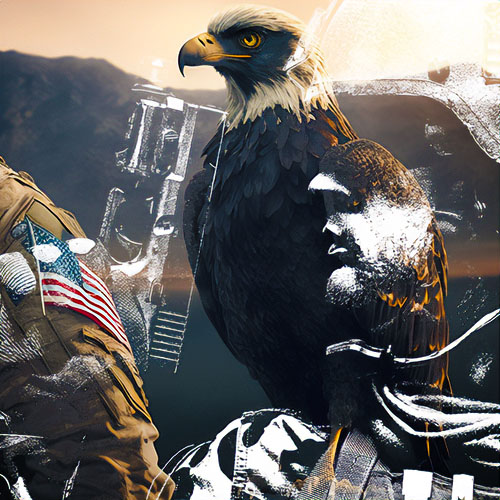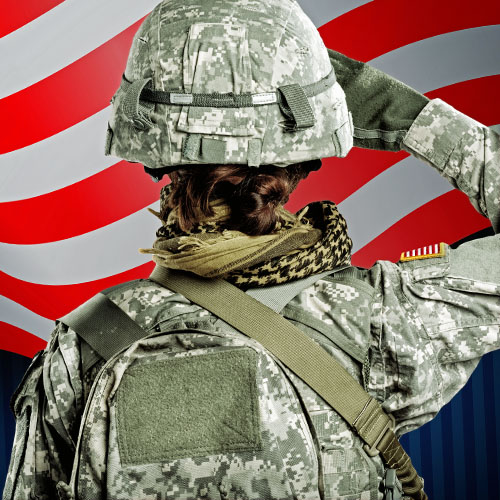Our Nation’s World War II heroes are rapidly vanishing — but the American Veteran’s Center is making sure their stories don’t die with them.
WWII – Battle Against Time
Chaos, smoke and fire turned an island paradise into hell on Earth when hundreds of aircraft from the Imperial Japanese Navy rained bombs down on the United States Naval base at Pearl Harbor in Oahu, Hawaii, on Dec. 7, 1941. Enemy soldiers targeted hangars and parked aircraft on the territory’s airfields and launched torpedoes against warships moored in the harbor.
During the first five minutes of the relentless assault, four battleships were hit — including the USS Oklahoma and the USS Arizona. A 1,760-pound bomb hit the Arizona’s gunpowder stores — and when it exploded, so did the doomed ship. The blast was so intense it briefly lifted the craft out of the water and gutted the forward decks. A massive fireball blew upward and engulfed its damaged masts. The bow was split from the rest of the cratered hull. Within nine minutes, the once grand ship began to slowly sink and would ultimately entomb more than 900 of its crew.
In total, the Arizona lost 1,177 sailors — accounting for nearly half of the American casualties during the sneak attack, which devastated the U.S. Pacific fleet and dragged the formerly neutral nation into World War II.
Just 334 servicemembers assigned to the Arizona survived — including 20-year-old U.S. Navy coxswain Howard “Ken” Potts. He was working as a crane operator and tasked with shuttling supplies to the battleship — but he was ashore when the Japanese began their assault. After racing to the scene, Potts helped rescue injured men from the oily harbor, which was ablaze, and later recovered some of the dead from their watery graves.
But Potts, like so many of his fellow heroes from the Greatest Generation, recently passed away — breathing his last in April, six days after his 102nd birthday. His death leaves only one remaining survivor from the Arizona: 101-year-old Lou Conter.
The fact that America’s WWII veterans are fading fast comes as no surprise. After all, the U.S. entered the war more than 80 years ago, which means the men and women who fought and won the historic conflict are now in their 90s — or older. According to U.S. Department of Veterans Affairs statistics, in 2022 only 167,284 of the 16 million Americans who served in WWII were still alive — and their numbers are dwindling daily. As these aging veterans disappear, their memories of the war’s triumphs and terrors threaten to vanish with them. But the American Veterans Center (AVC) is honoring their sacrifices, documenting their stories, and preserving their legacy for future generations.
The Arizona Memories
In 2020, Potts shared his memories with AVC.
“When I got back to Pearl Harbor, the whole harbor was afire. Oil that leaked out [from the damaged battleships] caught on fire and was burning,” he recalled.
Potts took a boat back to the Arizona and said he and others “picked people out of the water on the way” toward the flaming vessel.
He said when the onboard ammunitions exploded, that “basically blew the ship in half” and “that’s when it started to sink.”
Potts revealed, “That’s when they got on the loudspeaker and said to abandon ship.”
In the days following the attack, young Potts joined a diving crew to recover whatever corpses could be reached from the wreckage of the Arizona, which sank entirely by Dec. 10, 1941. He called it “the worst job I ever had.”
He also confessed, “Even after I got out of the Navy, out in the open, and heard a siren, I’d shake.”
Potts is just one of thousands of former veterans — from WWII and beyond — whose stories have been documented by AVC since it was founded in 1995. Dramatic oral histories telling the real-life tales of horror and heroism are available on the nonprofit’s YouTube channel, and written stories — submitted by former military members themselves or by their families — can be found at the Home of the Brave section of American Veterans Center online.
In addition, AVC provides all of its video and audio interviews to the Library of Congress’ Veterans History Project for use by researchers. The organization also produces a variety of multimedia content, including documentaries and television specials, such as American Valor: A Salute to Our Heroes. AVC has called the Emmy-winning franchise an annual Veterans Day television tradition, which recounts the legends and heroes of the last 75 years of American military history.
AVC has also behind our nation’s largest Memorial Day event in Washington, D.C., a parade which draws an astounding 300,000 in-person spectators. This year as NASA prepares to return to the moon after more than five decades, the parade enlisted three former American astronauts — and veterans — as grand marshals: Russell “Rusty” Schweickart, lunar module pilot on Apollo 9, Charlie Duke, lunar module pilot on Apollo 16, and Harrison “Jack” Schmitt, lunar module pilot on Apollo 17. Duke and Schmitt are two of the four still living men to have walked on the moon, with Schmitt having been the very last to set foot on its surface.
Podcasts, magazines and more also reflect the AVC’s dedication to honoring our country’s WWII servicemembers.
The USS Arizona Memorial was formally dedicated on May 30, 1962. The museum and monument remain accessible only by boat and actually straddle the sunken hull of the battleship without touching it. Over 40 late survivors chose to have their ashes interred at the site to join their fallen brothers. The urns of the deceased were placed by divers in the well of the submerged barbette on gun turret No. 4. More than 2 million people visit the location annually.
The physical monument to the Arizona’s crew will remain for generations — but AVC is ensuring the memories of our WWII vets will also stand as a fitting tribute to their personal accomplishments and sacrifices.
You can learn more about The American Veterans Center of course — immersing yourself in the stories of past military heroes of all generations. If you can make it to Honolulu, though, a visit to the actual USS Arizona Memorial just migh




















